“I’m strong! I can do hammer by myself. See? This is going to be the bridge for we all build together.”
-3 year old boy at Rosa Parks Early Childhood Center.
I walked into this classroom after the FIRST MONTH of school to find children in engaged in every center around the room. And one of the things that blew my mind was the 3 year olds woodworking in the construction area!
“Bang, bang, clunk!” -The beautiful sounds of children engaged in creating that I heard that day!
WOW! And they were not hurting each other or themselves, but instead the were working together, sharing, helping one another hold the boards for stability, and learning so many valuable skills from this experience.
Woodworking Benefits
- Fine Motor Skills by holding nails or screws in place
- Persistence
- Focus
- Large Motor Skills by using arm muscles
- Sharing and teamwork
- Cognitive domain growth
- Social/Emotional through confidence, respect for materials and others, and confidence
- Math through engineering skills, measurements, and size
Safety Considerations
- For children under 3, be mindful of appropriate tools (I usually used the plastic tools for under 3)
- Adult supervision required – best to have woodworking area with small group
- Model appropriate use of tools (Have plastic to practice on own is a great idea)
- Wear goggles
- Start the nail for children new to woodworking
- Allow them to try! Children are more competent than sometimes we allow.
Brilliant Idea to Start
Materials:
- Child size hammers
- Screw Drivers
- Large and small nails (with larger type head)
- Large screws (Screw part way into wood)
- Cardboard with letter or number written on it
Directions:
Write a letter or number on cardboard and place on top of wood block. Allow child to hammer the nails to form that letter or number. As children become familiar, allow them to write their own name, letter, or design to hammer.
There are so many fabulous explorations for woodworking with children. It is a great skill that needs to be back into the classrooms again! Thanks Rosa Parks Early Childhood Center for sharing your woodworking inspirations!
BONUS DOWNLOAD: Click here to download our e-book: Ever-Changing Environments. Discover the beautiful materials and design of Rosa Parks Early Childhood Education Center.
Comment below how you are woodworking in your classroom!
Watch a short clip with 3 year olds woodworking after the first month of school!

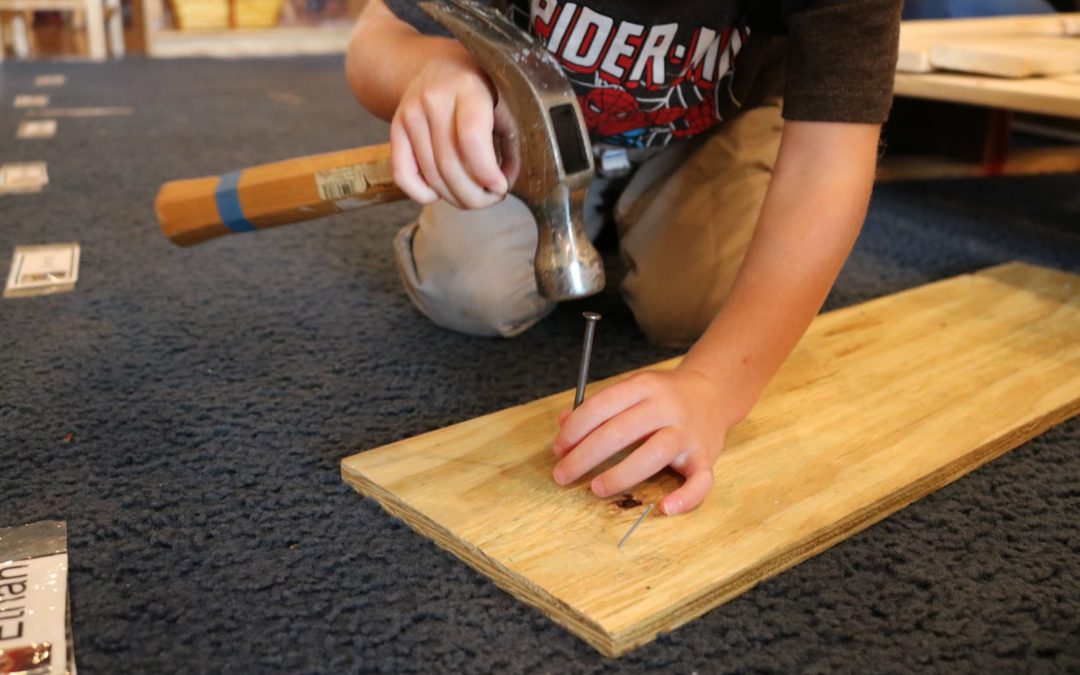
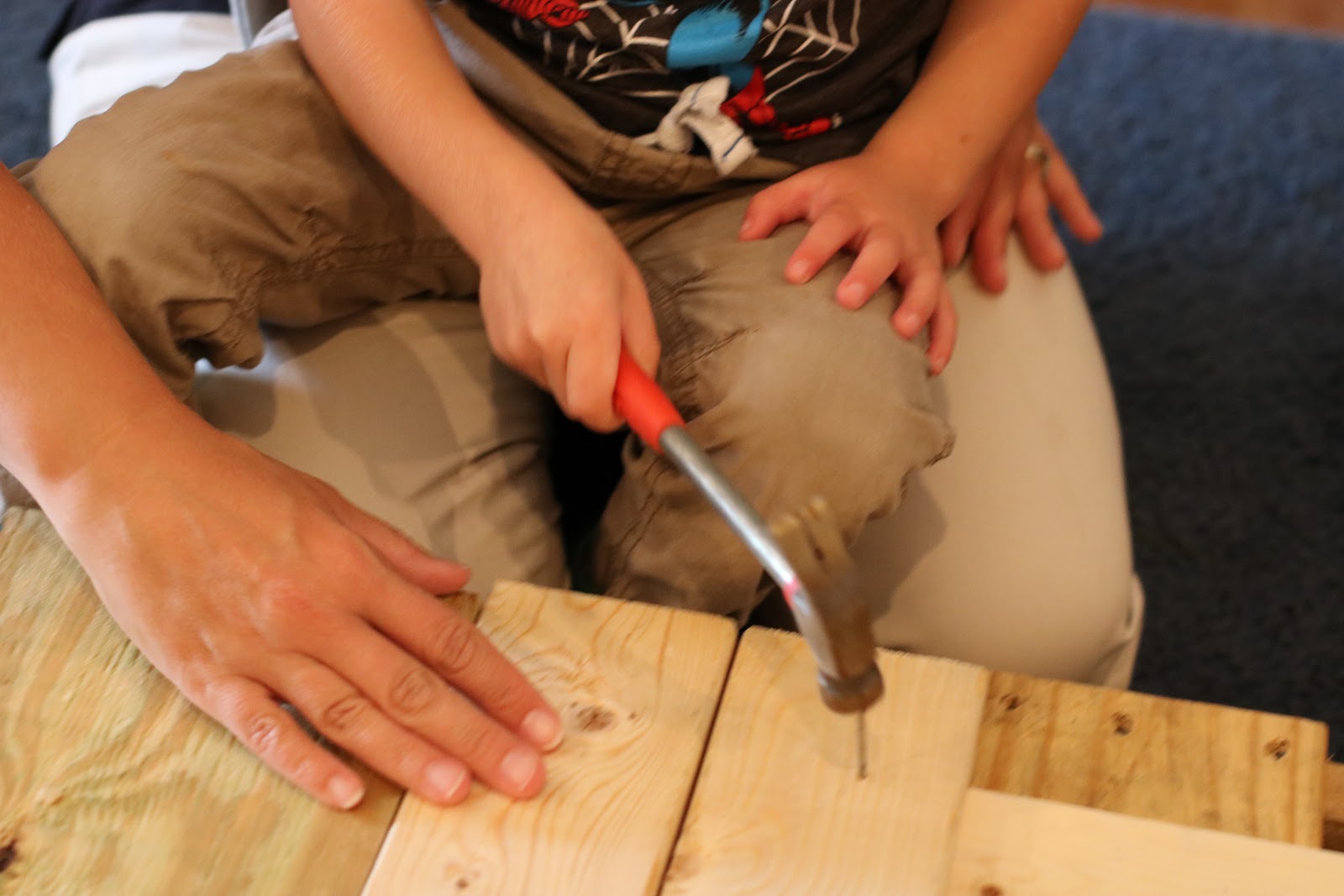
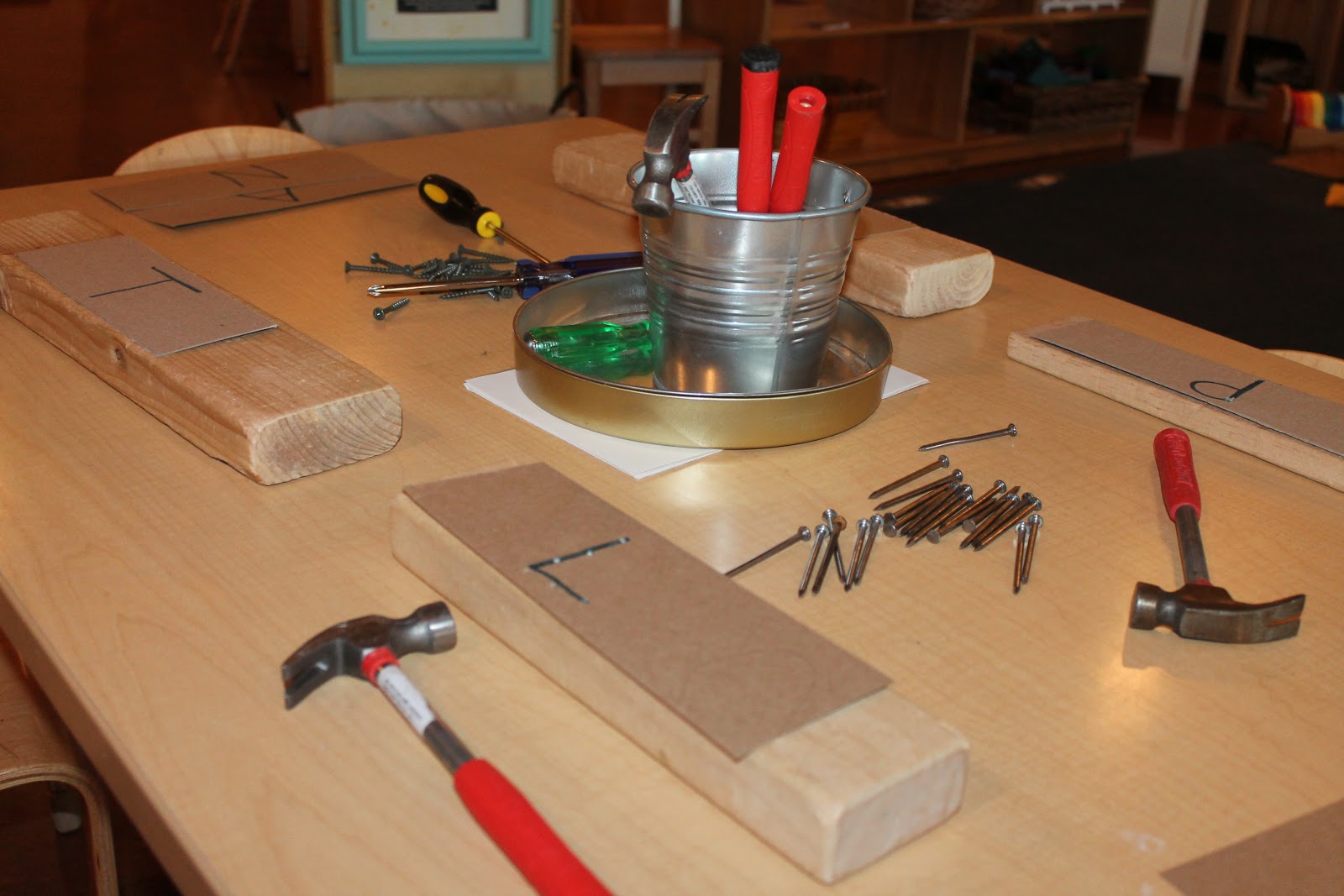
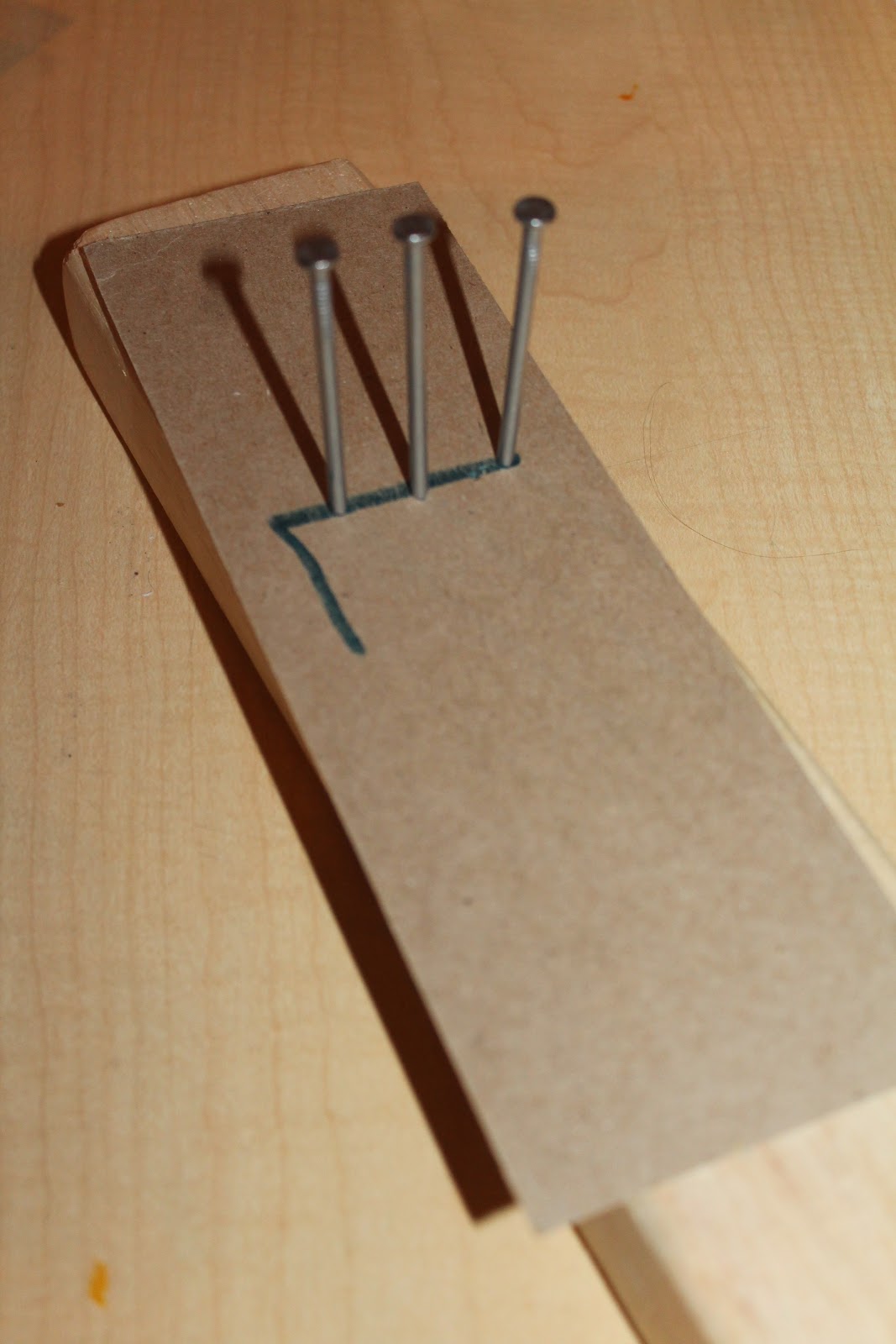
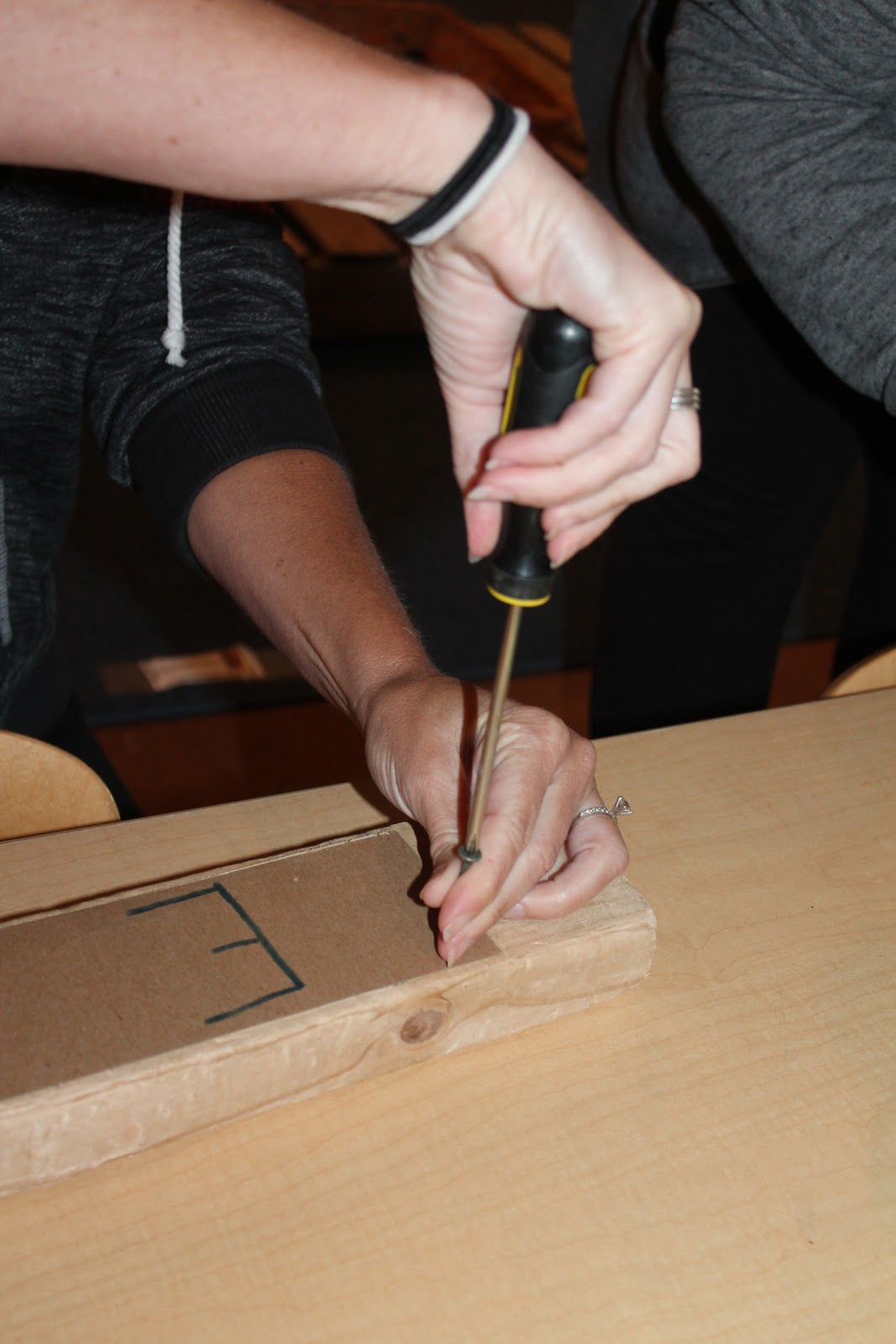

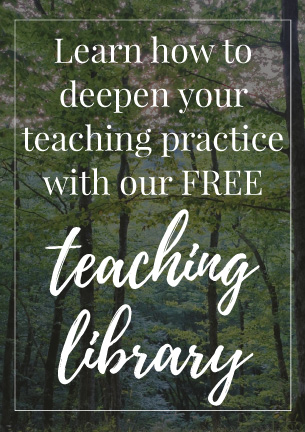
Free open center is to have nails partly sunk into a tree stump and give children rubber mallets or small hammers to finish the hammering. Stumps are usually softer than dry processed lumber and easily allow nails to be driven in.
Great tip, Michelle. This could be a center inside or outside!
We used stumps, too! We began woodworking with nailing into pumpkins with ball pin hammers or short hammers. We included sanding as part of woodworking, too. My class (3s turning 4) also enjoyed nailing fabric into scrap styrofoam as a first experience with a hammer.
I’m working on woodworking area within my setting thank you for posting this as doing a lot of research into the benefits of woodworking with this age group this will help me explain to parents the benefits of woodworking.
How exciting, Elizabeth! Keep us posted on how things are going in your classroom!
Go with soft wood.
I was just at an open house for a Waldorf preschool last night. I noticed that the teacher had a workbench set up, however, I overheard that she only does this with the older students (some 4’s
mostly 5 and 6). I was a little bummed to hear that as I have read so much about 3-year-olds being very capable of this type of activity. I have been interested in trying this with young kiddos and am very excited to see what expertise I can take from this post!
I work with Grade 2 students in a public school. We have two bins of donated wood scraps. I have purchased a couple of hand drills, small miter boxes, hand saws, various sizes of hammers, screw drivers, measuring tapes, ear and eye protection—all second-hand. We also have two wood burning kits. The expensive part has been keeping nails, screws, and wood glue in stock! The students can choose to do woodworking in my Reggio-inspired classroom. THEY LOVE IT!
How wonderful and what a rich experience!
Hi Caralyn, LOVED the fact your kids can do wood working. I just got a table and some tools and eye protection. Am looking forward to beginning with my grade 2/3 kids. Any suggestions for projects? Marsha
Do you have a link to the tools you would use for 2 year olds?
I don’t have a link, but small plastic tools for independent play allows the children to explore safely, then I moved to small child sized real hammers under close supervision. What fun! Also large nuts and bolts are wonderful for fine motor skills, just make sure they are large enough to be safe in case some of your curious children put them in their mouths!
My two year old children have a wood working experience. They use the same tools as the older children. Neither two year old has sown any interest in using a saw.
Hand drills
Smaller sized hammers
Nails and screws.
Power drill
Power screwdriver
However there is a lot of scaffolding using art to reach that point.
Gillian, I agree that even the youngest learners can handle real tools with proper supervision and scaffolding, it is magic to watch them work!
Thank you Sally, I love the idea however in my school I don’t have the permission to do so. As I am unable to connect with,I would like to know how does it help in the cognitive domain growth.
Woodworking addresses many domain areas for growth in the child. Pertaining to cognitive development: it enhances the child’s persistence and focus skills which is a key domain in brain development as they focus on hitting nails, adjusting their wood to hit correctly, and continuing with it. Problem solving is also a big cognitive domain area that is shown tremendous growth as children have to figure out to hard to hit the nail in, how to hold the wood, and eventually what to create. There is tremendous learning that takes place and I would encourage you to continue to advocate for this!
I think there should be woodworking even in the primary grades – kindergarten through third grade.